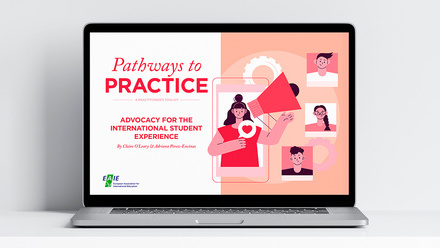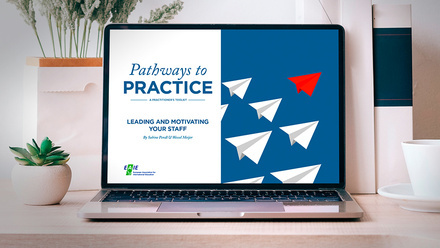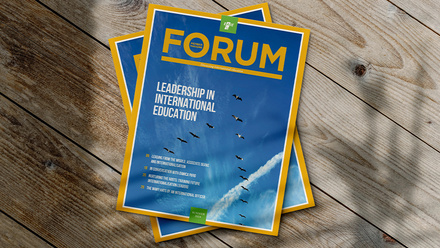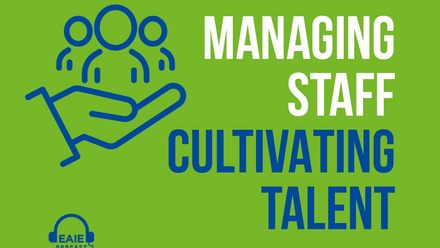Ten tools for managing an international office

No one is born a manager, and hardly anyone in charge of an international office has a formal qualification in management. The good news is that you can learn most of the crucial competences for managing your international office well, and there are plenty of tools out there to help you along the way.
In this blog post, we will briefly introduce you to ten tried and true management tools that can make all the difference in managing your international office. We’ll be elaborating on these tools in our course at the upcoming EAIE Autumn Academy in Budapest, but in the meantime, here are some tips to get you started.
1. Priority matrix
The most precious resource a manager has is time. As a manager of an international office, you are bombarded with e-mails from all over the world and questions from all layers of the university, and are confronted with many different kinds of issues. The truth is, you will never manage to do everything that is expected of you. A simple priority matrix is the perfect time management tool to help you make the right choices in order to be as effective and efficient as possible.
2. SWOT analysis and confrontation matrix
Of course, you have heard about the SWOT analysis as a first step for developing your international strategy. However, it is surprising how many people have difficulties putting this methodology in practice correctly. And what do you do with these lists of strengths, weaknesses, opportunities and threats? A very helpful tool for that is the confrontation matrix, which helps you identify your most effective strategic options. SWOT might sound old school to some, but it really is a very effective instrument.
3. The golden rules how to manage your boss
The top three concerns of an international office manager always contain issues related to his or her senior supervisor. The supervisor might not understand internationalisation, maybe only talks but never listens, micromanages you or gives instructions to your staff directly without even consulting you. But there are plenty of tips out there for how to deal with a difficult boss. These tips run from trying to really understand the underlying motives and problems your boss is to specific communication skills. For our upcoming course at the EAIE Autumn Academy in Budapest, we have compiled a list of 10 golden rules. Not all of them will work with your boss, but you’re sure to find something helpful among them!
4. The lines of power within your university
Are you sometimes surprised by how and why certain decisions are made in your university and left wondering how best to influence decision-making in your university? Unfortunately, decisions are not always made in a rational way based on objective proposals, weighing carefully all the pros and cons. Often, connections and trust in people and positions are equally important in decision-making. Visualising the real lines of power within your university is vital, and you will find out that they often deviate from the formalised decision-making process. Once you have insight into this, you can focus your influencing efforts more effectively – or at least be less surprised by decisions being made.
5. International office communication matrix
Typically, an international office communicates with a large diversity of target groups, each with a rather distinct message. A one-size-fits-all model does not exist, but in using a simple communication matrix, you will discover it is not as difficult as it might look at first sight, and it helps you explain your activities to your communication department.
6. The six sources of influence
As a manager you have influence over other people’s behaviour. The words “influence over others” might sound unpleasant, but in your role as manager it is expected from you. In fact, you are being paid for using your influence in the most effective way for your team. Studies have revealed that leaders have six sources of influence. Next to the formalised one that comes with your position, you have the power to sanction, the power to reward, your (perceived) expertise, your information position and last but not least the power of your personality. In practice, you’ll be surprised how important your “soft powers” are.
7. The leadership style grid
There are leaders, and then there are leaders. A classic way to identify your leadership style is to plot it on a line with two extremes: task-oriented versus people-oriented (or result manager versus people manager). In identifying your personal leadership style in a sophisticated way, it allows for a situation where you can be both task-oriented and people-oriented. What kind of leader are you? Can you adopt your style if the situation changes?
8. The Ezerman ladder of escalation
Some people can display difficult behaviour in groups or teams. How do you deal with difficult behaviour? A very helpful mental tool is the Ezerman ladder of escalation, which allows you to intervene in a way that minimises the risk of disruption of the group effort.
9. The international office organisation model framework
International Offices are structured differently all over the world. There is no perfect blueprint. Does that mean that anything goes? No. The international office organisation model framework helps you determine alternative options for your unit and evaluate them.
10. Peer consultancy
As manager, sooner or later you will face situations that confront you with dilemmas you cannot just simply solve – in fact, you might not even know which way to turn. Don’t panic! There is a proven technique in which colleagues might help you out in a safe but effective context: it is called peer consultancy. In a protocolled way, you clarify your problem and your peers then are able to deliver balanced and comprehensive advice from different angles. Without a doubt, this is one of the strongest tools we suggest here.
Knowing about these tools is just the start – really understanding and applying them is another. In the two-and-a-half day course 'How to manage an international office', we will discuss and practise all those tools and much more in a comfortable and collegial setting. We hope to see you there!






